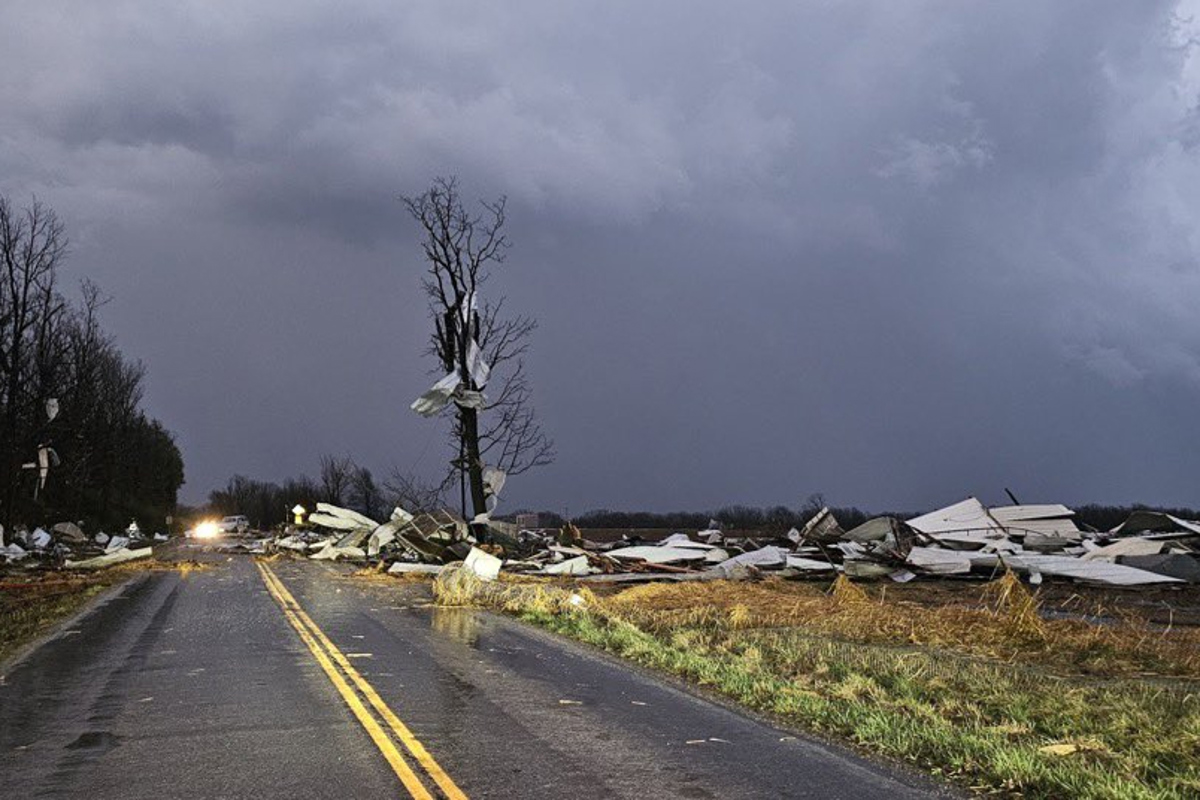Unprecedented Tornado Outbreak Claims Over 30 Lives in the U.S.
A devastating series of tornadoes and severe storms has swept across the United States, claiming over 30 lives and leaving a trail of destruction in its wake. This unprecedented tornado outbreak has raised urgent questions about preparedness, climate resilience, and the safety of communities vulnerable to extreme weather events. As families mourn and communities begin to rebuild, it’s crucial to analyze the broader implications of such natural disasters and how we can better prepare for the future.
The Impact of the Tornado Outbreak
The recent tornado outbreak, which struck several states including Arkansas, Mississippi, and Alabama, has been described as one of the most severe in recent history. Meteorologists report that conditions were ripe for such disasters, with a perfect storm of warm, moist air meeting a cold front, creating an environment conducive to tornado formation.
According to the National Weather Service, the tornado system produced multiple EF-2 and EF-3 tornadoes, with winds exceeding 150 miles per hour. This kind of intensity is capable of flattening buildings, uprooting trees, and turning debris into lethal projectiles. As communities assess the damage, the human cost is stark—over 30 lives lost and countless injuries reported.
Communities in Crisis
In the aftermath of the tornado outbreak, affected communities are facing immense challenges. Emergency services have worked tirelessly to rescue individuals trapped in the rubble and to provide immediate aid to those displaced by the storms. Local shelters have opened their doors to offer refuge to families who lost everything, while volunteers from neighboring towns have rushed in to help with recovery efforts.
- Rescue Operations: First responders have been on the ground conducting search-and-rescue missions, often in treacherous conditions.
- Emergency Relief: Organizations like the American Red Cross are mobilizing resources to provide food, shelter, and emotional support to victims.
- Community Solidarity: Neighbors have come together, organizing donation drives and volunteer efforts to assist those impacted by the tornadoes.
Preparedness and Response: Lessons Learned
This catastrophic event has highlighted the need for improved preparedness and response strategies. Many areas affected by the tornado outbreak were under tornado watches and warnings, but the sheer ferocity and speed of the storms caught many off guard. This situation raises critical questions: How can communities better prepare for such extreme weather events? What measures can be implemented to enhance resilience against future tornado outbreaks?
Here are some key takeaways that can aid in future preparedness:
- Public Education: Increasing awareness about tornado safety, warning systems, and emergency preparedness can save lives. Schools and community centers should conduct regular drills and informational sessions.
- Infrastructure Improvements: Investing in stronger building codes and community shelters can provide safer havens during severe weather events.
- Technology Utilization: Advanced weather forecasting and alert systems can help disseminate timely warnings to residents, allowing for quicker responses.
The Role of Climate Change
As we dissect the factors contributing to this unprecedented tornado outbreak, climate change emerges as a crucial component in the discussion. Scientific research indicates that rising global temperatures are influencing weather patterns, leading to more extreme and unpredictable weather events.
Climate change contributes to:
- Increased Instability: Warmer air holds more moisture, which can lead to more severe storms and tornadoes.
- Changes in Storm Tracks: Shifts in atmospheric conditions can alter the traditional paths of storm systems, making some regions more susceptible to tornadic activity.
Addressing climate change is not just an environmental issue; it’s a matter of public safety. As communities grapple with the aftermath of this tornado outbreak, there’s a pressing need for a national conversation about building climate resilience into our infrastructure and emergency response strategies.
Moving Forward: Building Resilience
In the wake of such tragedies, it’s easy to succumb to despair. However, history has shown that communities are remarkably resilient. As we reflect on the recent tornado outbreak, there’s an opportunity for growth and improvement. Here are some steps that could be taken to foster resilience:
- Community Engagement: Involving local residents in disaster preparedness planning can lead to more effective and tailored strategies.
- Investment in Green Infrastructure: Developing parks and green spaces can help absorb stormwater and reduce flooding, ultimately mitigating tornado impacts.
- Support for Mental Health: Providing psychological support to those affected by disasters is crucial for long-term recovery. Communities should prioritize mental health resources as part of their recovery plans.
Conclusion
The unprecedented tornado outbreak that has tragically claimed over 30 lives is a stark reminder of nature’s power and unpredictability. As we mourn those lost and support those affected, it’s imperative that we reflect on our preparedness and response systems. By learning from this disaster, investing in resilience, and addressing the underlying issues of climate change, we can work towards a safer future for all communities. Together, we can emerge stronger and more united in the face of adversity.
See more Your Daily Weather



